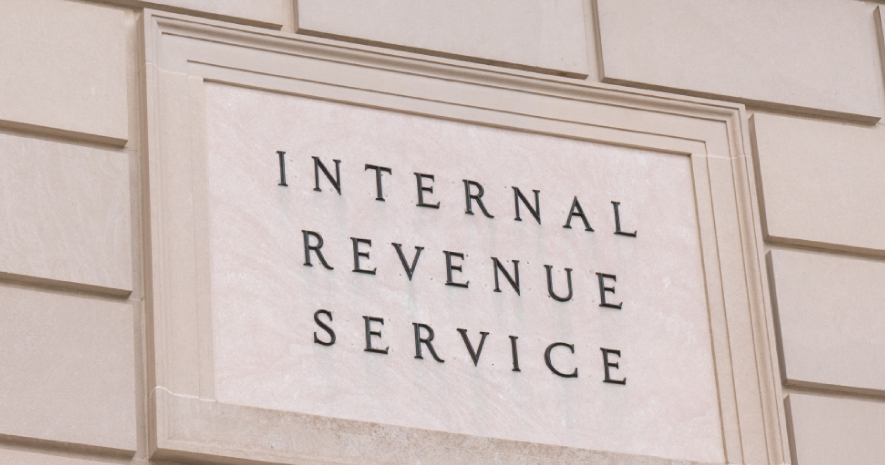In a recent Tax Court case, the IRS attempted — unsuccessfully — to supplant the fair market value agreed to by unrelated parties in a partnership transaction with its expert’s higher estimate, asserting that the taxpayer received a taxable capital interest in exchange for services provided to a partnership, not a nontaxable profits interest. If structured and substantiated properly, profits interests can be valuable tools for compensating providers of services to partnerships at no immediate tax cost. Although the court upheld the taxpayers’ valuation, the IRS challenge highlights the importance for partnerships to:
- Properly determine, support and document value when granting and establishing rights to profits interests, and
- Strongly consider revaluing partners’ capital accounts according to Treasury regulations to reflect fair market value when profits interests are granted.
The case, ES NPA Holding LLC v. Commissioner, T.C. Memo 2023-55 (May 3, 2023), involved a partnership (ES NPA) that provided services to another partnership in exchange for a partnership interest. The taxpayers contended that interest was a profits interest, which was not immediately taxable. The IRS argued that, under its higher estimation of the value of the underlying business, ES NPA took a capital interest in the partnership that ostensibly should be immediately taxable.
Relying on the fair market value negotiated among the parties to the transaction, the Tax Court agreed with the taxpayer that there was not a taxable capital shift between partners. Unsurprisingly, the Tax Court also concluded — premised on the IRS’s guidance in Revenue Procedure 93-27 — that receipt of a profits interest will not result in the immediate recognition of taxable income. What is somewhat surprising is that the IRS challenged whether the interest was, in fact, a profits interest.
Facts in ES NPA Holding
Under the basic facts, a partnership (NPA, LLC) had three classes of units, including Class A, Class B and Class C units. Upon liquidation of NPA, LLC, the Class A and Class B units were to receive 100% of the original capital assigned to these units before any amounts would be distributable to the Class C units – which were the units that ES NPA received in exchange for its services.
After an unrelated third party purchased 70% of the company for $21 million, the parties to the transaction agreed that the original capital assigned to the Class A and Class B units was $21 million and $9 million, respectively. Thus, the total agreed to value of NPA, LLC was $30 million. Under this valuation, the Class C units held by ES NPA would have $0 value in the event of a hypothetical liquidation of NPA, LLC, at the time of the transaction – suggesting ES NPA received only a profits interest in NPA, LLC.
IRS Challenge
Despite the parties’ agreement as to the $30 million equity valuation, the IRS argued that the value of NPA, LLC was $52.5 million. Using this value, the IRS determined that the liquidation value of the Class C units held by ES NPA was in excess of $12 million (rather than $0). Assuming this valuation is accurate, the Class C units would be considered capital interests and would not be eligible for the safe harbor under Revenue Procedure 93-27, which generally exempts from immediate taxation profit interests – but not capital interests – received in exchange for the provision of services to a partnership.
Based on its arguments, the IRS appears to believe that such a capital shift would be immediately taxable to the recipient. Although not specifically addressed in the Tax Court’s decision, receipt of a capital interest in exchange for the performance of services is generally a taxable event under established case law. However, there is some question around whether a capital interest received for purposes other than the performance of services would be immediately taxable.
Tax Court’s Holding
Ultimately, the Tax Court concluded that the best estimate of fair market value in this case was the purchase price agreed to by unrelated parties. While acknowledging that formal valuation reports may be helpful in establishing fair market value, the Tax Court noted that such appraisals are not required. Rather, as in this case, deference was provided to the transaction price agreed to by unrelated taxpayers. Importantly, the Tax Court noted that the testimony of the selling taxpayer was credible and unbiased. The Tax Court further noted, “we find nothing in the record to dispute a finding that the transaction was arm’s length and bona fide.”
What If the Court Accepted the IRS’s Narrow Reading of Its Own Revenue Procedure?
Although this case is a “win” for the taxpayer, the IRS presumably didn’t go to court without reason. The IRS believed the recipient of the Class C units should immediately recognize taxable income. However, the IRS’s primary argument sought to prevent application of Revenue Procedure 93-27 via a narrow reading of the guidance. The IRS’s primary argument was not whether the Class C units represented a capital interest. What if the Tax Court agreed that Revenue Procedure 93-27 didn’t apply to these facts?
Revenue Procedure 93-27 is a safe harbor provision that states the IRS will not treat receipt of a profits interest as immediately taxable. If the Tax Court agreed that the safe harbor didn’t apply, as argued by the IRS, the IRS would still need to address judicial precedent holding that receipt of a profits interest is not taxable because the value of the interest received is speculative. Thus, the IRS would then have had to successfully argue that the Class C units had value beyond speculation. Given the result in the IRS’s secondary, capital shift argument, it seems unlikely that it would have prevailed.
Key Considerations and Takeaway
Acknowledging the taxpayer’s success in this case, it is important to note that the IRS sought to challenge the taxpayer in court. This is presumably not a decision taken lightly by the IRS. Is this a warning sign to taxpayers when structuring transactions where the buyer anticipates future upside that may or may not be speculative?
There are a few important factors that, if the facts had been different, potentially could have altered the outcome of the case:
- The Tax Court found the selling taxpayer’s testimony to be credible and unbiased, with nothing in the record indicating something other than an arm’s-length transaction.
- The facts did not indicate that the taxpayer needed the cash to support further business operations, was simply looking to monetize his investment as quickly as possible or otherwise facing circumstances prompting the seller to sell at a discount.
- The lack of taxpayer relatedness was important in supporting the use of the agreed fair market value.
- The discussion within the Tax Court’s opinion doesn’t address whether the property owner ever sought other bids for his business or if that would have changed the court’s analysis and conclusion regarding the credibility and unbiased nature of the witness.
Ultimately, while a positive outcome for the taxpayer in this case, the IRS’s decision to take this case to trial should serve as a cautionary tale. Taxpayers are well advised to closely scrutinize the factors in their own transactions to ensure the fair market value positions are fully documented and supported.
When issuing a profits interest, it's critical to document the valuation of the partnership and to strongly consider a book up of capital accounts to reflect the valuation. Analyzing and documenting whether the bargaining positions of the parties are truly adversarial would presumably help substantiate the parties’ agreement of value.







